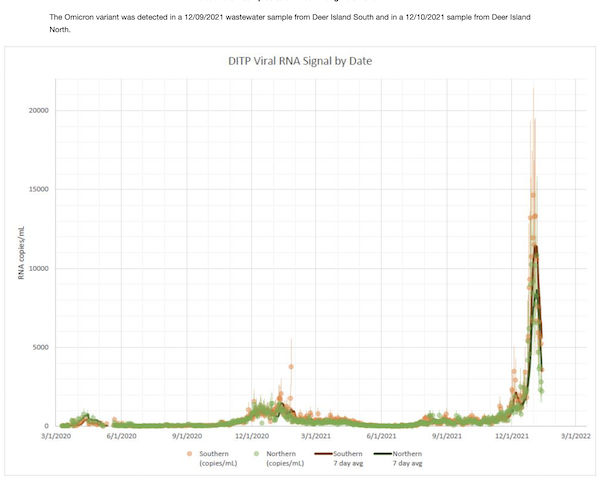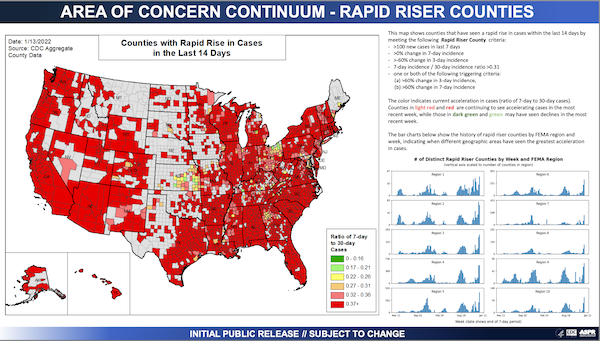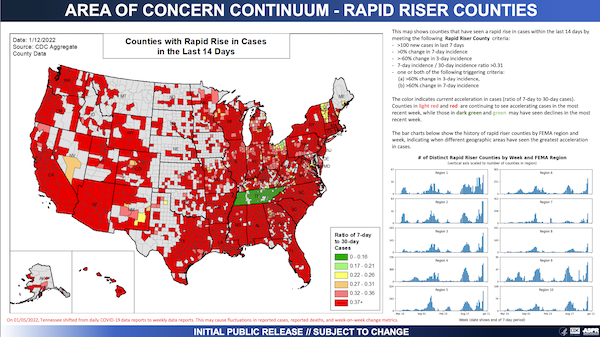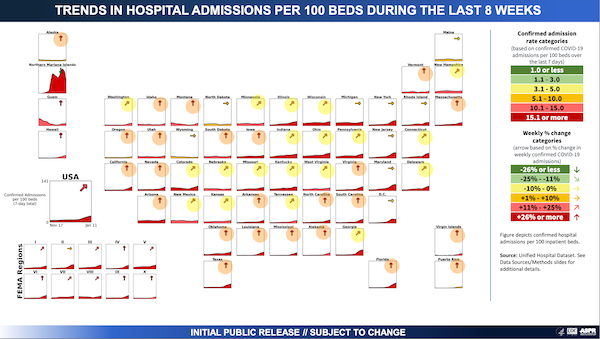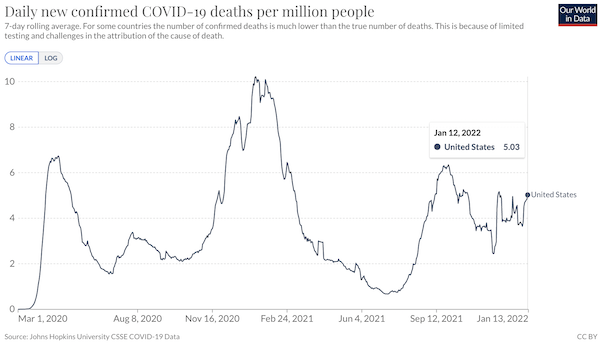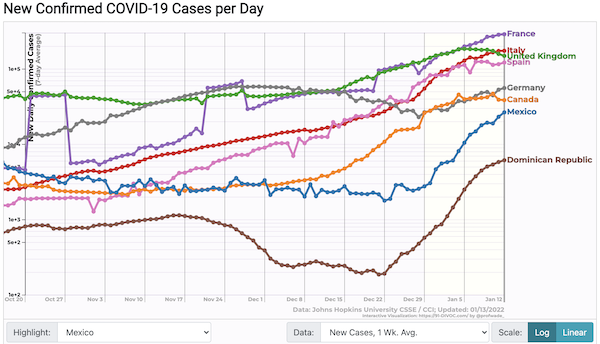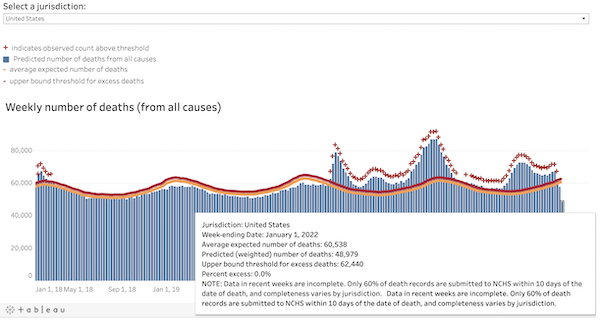[ad_1]
By Lambert Strether of Corrente.
Bird Song of the Day
More winter birds. There are five (!) types of Evening Grosbeak. This is Type 4.
Politics
“But what is government itself, but the greatest of all reflections on human nature?” –James Madison, Federalist 51
“They had learned nothing, and forgotten nothing.” –Charles Maurice de Talleyrand-Périgord
“When the going gets weird, the weird turn pro.” –Hunter Thompson
Capitol Seizure
“Analysis: U.S. built ‘textbook’ case of sedition charges for Capitol attack -legal experts” [Reuters]. “The indictment for the Jan. 6 attack is “thorough and rigorous,” said Alan Rozenshtein, a former Justice Department national security lawyer who teaches at the University of Minnesota Law School.” Oh, a “former national security lawyer.” Say no more! Say no more! More: “Lawyers and extremism researchers said the Justice Department appears to have carefully vetted the Oath Keepers indictment, possibly using cooperating witnesses to build a more clear-cut case of attempting to overthrow the government…. ‘The government has a strong case against the Oath Keepers,’ said Joshua Braver, a professor at the University of Wisconsin Law School. Unlike the Hutaree, the Oath Keepers ‘executed their real agreement to obstruct the peaceful transfer of power.’”
“January 6 and the F Word” [John Ganz, African-American Policy Forum]. Interesting historical parallel: “[T]here are a number of eerie parallels between the events of January 6, 2021 and February 6, 1934 [in France]: in both cases, a loose coalition of right-wing groups and their sympathizers attacked the national legislature in an attempt to disrupt the recognition of a new government; in both cases, the mobs were animated by conspiracy theories and myths about their opponents; in both cases, the crowds united old and new political tendencies on the right and included many military veterans. And in both cases, the meaning and significance of the event was immediately contested in a highly polarized public sphere. In 1934, the dead and wounded rioters became martyrs for the far right, just as Trump and others have attempted to do with Ashli Babbitt. For the participants and sympathizers, the riots on February 6, 1934 signaled a patriotic stand against corruption and the machinations of the left and the first hints of a long hoped-for “national revolution.” For the left, it represented the undeniable arrival of the fascist threat in France. But it is here that the parallels begin to end. The riots on February 6, which resulted in greater loss of life than the January 6 action did, did not enter the legislative chamber, but did bring down a government: the new premier Édouard Daladier resigned the next day after weathering several votes of no confidence. On January 6, the mob entered the chamber, but could not change the course of political events. To the French left, the events of February 6 represented a coordinated plot to overthrow the Republic, an attempted “fascist coup.” This judgment proceeded to guide their energetic political response: a general strike and ultimately unification of the disparate left-wing parties in the Popular Front. In historical retrospect, we know there was no coup plot: February 6 was not the result of a centrally directed move against the constitutional order, even if the anti-parliamentary leagues on the street had close ties to some right-wing members of parliament.”
“Congress may change this arcane law to avoid another Jan. 6” [NPR]. “The Electoral Count Act came as a reaction to the presidential election of 1876, which saw Democrat Samuel Tilden win the popular vote but ultimately lose the presidency to Republican Rutherford B. Hayes because of contested election results coming from three Southern states under the control of Reconstruction governments: Florida, South Carolina and Louisiana….. A decade later, Congress passed the Electoral Count Act into law to avoid similar situations in the future, but ‘the crafters of this law unfortunately did a terrible job,’ says Rebecca Green, the co-director of the Election Law Program at William & Mary Law School…. The legislation is ‘extraordinarily complex’ and ‘far from the model of statutory drafting,’ according to an analysis by the National Task Force on Election Crises (of which Green is a member), but the law does create a framework and timeline for when states need to have their election results finalized…. [T]he law also allows members of Congress to easily object to results submitted by states and to prolong the counting process, even without legitimate concerns, and according to legal experts, it does not do a good enough job clarifying the vice president’s role… It’s especially important to do it this year, said Ned Foley, an election law expert at The Ohio State University. ‘The time to address [these problems] is now,’ Foley said. ‘Now is the maximum veil of ignorance: where the two political parties don’t know exactly what the lay of the land is going to be in ’24 and ’25, and so there’s a greater chance of bipartisan consensus on the clear procedures for governing the process.’”
Biden Adminstration
Zeitgeist watch:
The mood in Official Washington is weird and surly and bad. It is hard to imagine anyone getting anything done in this tense climate.
— Alexander Nazaryan (@alexnazaryan) January 13, 2022
“Democrats’ filibuster gambit unravels” [The Hill]. “The remarks from [Manchin and Sinema], though not out of line with their months-long position, underscored that Democrats’ bid to change the legislative filibuster have hit a wall…. Biden acknowledged that reality as he left the Senate Democratic caucus lunch, telling reporters, ‘The honest-to-God answer is I don’t know whether we can get this done.’ White House press secretary Jen Psaki vowed that the White House would keep pushing until the Senate voted, however, saying that ‘we’re gonna keep fighting until the votes are had.’” Always “fighting,” never winning. More: “[W]ithout a shift from Manchin or Sinema on changing the filibuster, and using the ‘nuclear option’ to do so without GOP support, voting rights legislation is facing a dead end. Democrats need 50 votes, meaning total unity within their conference, to change the filibuster.”
“Schumer delays voting rights votes until next week as Democrats face filibuster fight” [CNBC]. “Senate Majority Leader Chuck Schumer delayed votes on a pair of voting rights bills, pushing back a debate over the chamber’s rules that will decide the fate of election reforms the Democratic Party sees as vital to protecting U.S. democracy. The New York Democrat said late Thursday that the chamber would not take up the legislation until Tuesday, citing ‘the circumstances regarding Covid and another potentially hazardous winter storm’ approaching Washington, D.C. Sen. Brian Schatz, D-Hawaii, announced a positive Covid-19 test on Thursday. Democrats will lack a simple majority until he can return to the evenly split Senate. ‘Make no mistake, the United States Senate will — for the first time this Congress — debate voting rights legislation beginning on Tuesday,’ Schumer said Thursday night. ‘Members of this chamber were elected to debate and to vote, particularly on an issue as vital to the beating heart of our democracy as this one. And we will proceed.’ Republicans plan to block two proposals, known as the Freedom to Vote Act and the John Lewis Voting Rights Advancement Act. Once the bills fail, Democrats plan to consider ways to bypass the filibuster and push the proposals through with a simple majority.” • ”Once the bills fail….”
“Obama backs Biden push on changing filibuster” [The Hill]. • Oopsie.
* * * “House Republicans Release Text of Redacted Fauci Emails on Covid Origins” [The Intercept]. “The key distinction was in the ability of the new virus’s spike protein to interact with furin, which [virologist Robert Garry] found too perfect to make natural sense. he said.” • That, exactly and precisely, the Watchmaker Analogy, beloved by anti-evolution loons everywhere, that “a design implies a designer” (whether The Almighty or a Lab). My view is that lab origins falls under the heading of “extraordinary claims require extraordinary evidence,” and the Watchmaker Analogy doesn’t cut it. This view, however, does not preclude that Fauci, Daszak, and their [whatever the Mandarin is for “Merry Men”] didn’t worry about having blame pinned on them, and immediately started pulling strings to avoid that dreadful fate. (See Proverbs 26:1: “The wicked flee when no one pursues.”) Note also that it’s not possible to reverse engineer the truth out of bullshit. But a good round-up.
“Goodbye ‘godsend’: Expiration of child tax credits hits home” [NBC]. ” For the first time in half a year, families on Friday are going without a monthly deposit from the child tax credit — a program that was intended to be part of President Joe Biden’s legacy but has emerged instead as a flash point over who is worthy of government support. Retiree Andy Roberts, from St. Albans, West Virginia, relied on the checks to help raise his two young grandchildren, whom he and his wife adopted because the birth parents are recovering from drug addiction. The Robertses are now out $550 a month. That money helped pay for Girl Scouts, ballet and acting lessons and kids’ shoes, which Roberts noted are more expensive than adult shoes. The tax credit, he said, was a “godsend.’” • I can feel the excitement building for the midterms. Can’t you?
Democrats en Déshabillé
I have moved my standing remarks on the Democrat Party (“the Democrat Party is a rotting corpse that can’t bury itself”) to a separate, back-dated post, to which I will periodically add material, summarizing the addition here in a “live” Water Cooler. (Hopefully, some Bourdieu.) It turns out that defining the Democrat Party is, in fact, a hard problem. I do think the paragraph that follows is on point all the way back to 2016, if not before:
The Democrat Party is the political expression of the class power of PMC, their base (lucidly explained by Thomas Frank in Listen, Liberal!). ; if the Democrat Party did not exist, the PMC would have to invent it. . (“PMC” modulo “class expatriates,” of course.) Second, all the working parts of the Party reinforce each other. Leave aside characterizing the relationships between elements of the Party (ka-ching, but not entirely) those elements comprise a network — a Flex Net? An iron octagon? — of funders, vendors, apparatchiks, electeds, NGOs, and miscellaneous mercenaries, with assets in the press and the intelligence community.
Note, of course, that the class power of the PMC both expresses and is limited by other classes; oligarchs and American gentry (see ‘industrial model’ of Ferguson, Jorgensen, and Jie) and the working class spring to mind. Suck up, kick down.
* * *
Republican Funhouse
“GOP Election Deniers Are On Pace To Raise Record Sums For Secretary Of State Races” [HuffPo]. “Republicans who’ve pushed the lie that the 2020 election was stolen from Donald Trump are hauling in massive amounts of money to fuel secretary of state campaigns this year, with candidates in key swing states on pace to raise record sums for contests that have taken on new significance thanks to the GOP’s efforts to exert all-out partisan control over the country’s election systems. Democrats, who have cast their own efforts to defend incumbent secretaries of state in major battlegrounds as key to protecting American democracy, will also likely shatter fundraising records as donors shower candidates with the sort of early cash usually reserved for glitzier campaigns for Congress, U.S. Senate and governor. Secretary of state candidates in three battleground states — Georgia, Michigan and Minnesota — have collectively raised 2.5 times more than candidates had at a comparable point in 2014 or 2018 election cycles, according to a new analysis from the Brennan Center for Justice, a nonprofit that will track campaign spending in secretary of state races and other contests that will shape how elections are managed and run.” • Since “our democracy” includes both Democrat election denial that threatened war with a nuclear power along with Iowa 2020 forgive my inability to jump from my seat waving my pom poms….
“A Democrat won a US House seat this week with 79 percent of the vote. Her GOP opponent has not conceded.” [Boston Globe]. “An election in South Florida this week may serve as a marker for where the Republican Party stands in 2022, and how much American democracy has already changed since Donald Trump lost reelection….. The Democratic winner, Sheila Cherfilus-McCormick, is interesting. She is a progressive who spent her own money to win and backs the concept of universal basic income. She also becomes the first Haitian-American woman in Congress to represent Florida. She won 79 percent of the vote over Republican Jason Mariner… [Mariner] said he will file a lawsuit. Election officials say it takes 14 days to certify the results. Mariner, then, has 10 days to challenge them. While few would suggest that Mariner will be in Congress in this year his refusal to concede and decision to file a lawsuit raises an interesting question about the boundaries of American democracy. What if a partisan judge rules, without facts, in favor of a soundly defeated candidate for office? If that seems implausible, then what about for closer elections? These questions are some of the reasons why elections for Secretary of State, the official that typically administers elections in states, are among the most high-profile of the mid-term election year.”
“Big bucks flow into state races for election officials” [NBC]. “The Brennan Center for Justice at New York University School of Law found in an analysis released Wednesday that campaign contributions for election administrator contests are surging in some of the states that played key roles in the 2020 presidential election. In three battleground states with available fundraising data — Georgia, Michigan and Minnesota — candidates for secretary of state have raised 2½ times more than at the same point in the previous two election cycles. The figures underscore how once-overlooked races are now deeply partisan contests, in large part because of former President Donald Trump’s false claims of fraud in 2020. Arizona, Georgia, Michigan, Minnesota, Nevada and Wisconsin all have elections for secretary of state this year, and voter fraud claims and conspiracy theories are playing roles in each. ‘These have traditionally been sleepy bureaucratic races that no one’s heard of, and we’re seeing much more attention being paid to them and this feeling that the stakes are higher,’ said Ian Vandewalker, a co-author of the report. ‘Candidates on both sides are saying democracy is at stake if I win or lose — it’s pretty much unheard of in our lifetimes.’”
2022
“With Biden’s signature legislation stalled, Democrats stare into political void” [Politico]. “Democrats are quietly preparing for life after Build Back Better. With little progress on Joe Biden’s signature legislation, elected officials and operatives from across the president’s party are busy plotting how to run midterm campaigns without the benefit of a bill to bolster the social safety net and make generational investments to address climate change. It’s far from the ideal position. And party leaders and campaign strategists are holding out hope that the White House may still be able to revive nascent talks around the initiative to at least salvage some popular elements. But in interviews with nearly two dozen Democrats involved in the upcoming election, there is an increasing sense that political inertia may well win out and that their party will be forced to radically adapt its core pitch to voters.” • What I notice is that the press is already treating Biden like a lame duck. Not even a year into his administration. Too bad Vax-only was a debacle.
“Should Democrats Fall In Love With the 2022 Senate Map?” [Amy Walter, Cook Political Report]. “Senate Minority Leader Mitch McConnell, one of the best political strategists in modern times, has long warned candidates and campaign strategists to never fall in love with the Senate map. That is, no matter which seats are up in a given election year, Senate races can be quirky and unpredictable. A late-breaking scandal or a messy primary can turn a ‘safe’ seat into a competitive one. Throw in a midterm electorate, usually primed to vote against the party in power, and even a ‘good’ map can prove to be a mirage. Even so, the map is the best thing that Democrats have going for them in 2022. In fact, . For a party that can’t afford to lose even one seat, not having to hold onto a state Trump carried — especially in a midterm year — is a big advantage. Meanwhile, Republicans are defending two states, Pennsylvania and Wisconsin, that Biden narrowly carried in 2020. The fact that fewer voters split their tickets between presidential and federal down-ballot races these days, means that this phenomenon of a party defending only seats its presidential candidate won the previous election is going to be more common. But, it’s also true that since 1994 the party holding the White House has lost at least one seat it holds that was carried by the president in the previous election. This includes three midterm elections when the party holding the White House either gained seats in the Senate (2002, 2018) or didn’t lose any seats (1998).” • So maybe not abolishing the filibuster wasn’t so very bad. Or maybe all the Democrats knew that, Manchin was the rotating villain, and it was all kayfabe…
“On The Trail: Retirements offer window into House Democratic mood” [The Hill]. “Already, more Democrats have called it quits this year than in any cycle since 1996, when 29 members newly in the minority decided not to run again. The same number of Democrats, 29, retired in 1994, the year Republicans reclaimed control of Congress for the first time in four decades. The exodus may not be over yet. Several Democratic incumbents have not said whether they will seek another term, and others are likely waiting to see the new district lines they would have to run under after the decennial redistricting process concludes…. Already, more Democrats have called it quits this year than in any cycle since 1996, when 29 members newly in the minority decided not to run again. The same number of Democrats, 29, retired in 1994, the year Republicans reclaimed control of Congress for the first time in four decades. The exodus may not be over yet. Several Democratic incumbents have not said whether they will seek another term, and others are likely waiting to see the new district lines they would have to run under after the decennial redistricting process concludes…. ‘There is a lot of weariness and frustration in the ranks,’ said Ian Russell, a former top DCCC official. ‘The good news for Democrats, so far, is that with a few notable exceptions, the retirements have been in safe seats as opposed to front-line [competitive] districts.’” • It won’t take much more than “a few notable exceptions” to flip the House.
Realignment and Legitimacy
“Reps Bought Pipeline Stocks Before Passing the Infrastructure Bill” [Sludge]. “While Congress was considering the bipartisan infrastructure framework (BIF) and the BBB, several U.S. House members were making frequent trades in the stocks of oil and gas pipeline companies that stand to benefit from BIF’s provisions, especially combined with the BBB’s stalling out in the Senate.” • Rep. Virginia Foxx (R, NC-05), Rep. Mark Green (R, TN-07), and Rep. Kevin Hern (R, OK-01), but many others, including Democrats, bought energy stocks. When Pelosi said “We’re a free market economy. They should be able to participate in that,” she didn’t explain what goods were on offer. But I think I know.
“Scoop: Josh Hawley introducing his own stock ban bill” [Axios]. “Sen. Josh Hawley (R-Mo.) plans to introduce his own bill to prevent members of Congress from trading stocks, while Sen. Jon Ossoff (D-Ga.) teams up with fellow Democrat Mark Kelly (D-Ariz.), Axios has learned. This means there will be now be two similar bills to ban stock trades individually championed by two vastly different lawmakers—further complicating the effort to pass a stock trading ban this session. Between the lines: This comes after talks between Ossoff and Hawley’s offices fizzled out, and Ossoff had sought a Republican co-sponsor before partnering with Kelly.”
#COVID19
Case count by United States regions:
Small step after a big step Big step after a small step, a new recurring pattern (says the tape watcher). And a small step down. It would sure be nice if “rise like a rocket, and fall like a stick” applied, but we can’t know that yet. To be fair, previous peaks — how small the early ones look now — have been roughly symmetrical on either side. But the scale of this peak, and the penetration into the population, is unprecendented.
The official narrative that “Covid is behind us,” and that the pandemic will be “over by January” (Gottlieb), and “I know some people seem to not want to give up on the wonderful pandemic, but you know what? It’s over” (Bill Maher) was completely exploded. What a surprise!
“Two Paths for Omicron” [David Wallace-Wells, New York Magazine]. “On Tuesday, a large, preprint study from Southern California painted what counts as an encouraging picture.” This is the Kaiser preprint. More: “But, worryingly, at the moment there is data pointing in the other direction as well. On Sunday, the Times published an eye-opening group of charts to illustrate the early shape of American mortality during the Omicron surge. Compiling data from New York City, Chicago, and Boston, what they found was — given everything we know about immunity and about Omicron — almost hard to believe. In each case, shifting the graphs by 21 days to account for the typical lag between diagnosis and death showed that the number of deaths was now growing almost precisely in line with case growth. In other words, in this data at least, there was been almost no “decoupling” between cases and deaths at all — to this point, in these places, the Omicron wave appeared on a per-case basis just about as deadly as last winter’s surge, when hardly anyone in the country was vaccinated and the virus itself was inherently more virulent than this variant.” • The whole piece is well worth a read. I especially agree — it’s one of my priors! — that one nation’s experience with Covid cannot be translated to another nation’s. South Africa is not Israel is not the UK is not the US.
MWRA (Boston-area) wastewater detection:
Continues encouraging.
The Massachusetts Water Resources Authority (MWRA) service area includes 43 municipalities in and around Boston, including not only multiple school systems but several large universities. Since Boston is so very education-heavy, then, I think it could be a good leading indicator for Covid spread in schools generally.
From CDC Community Profile Reports (PDFs), “Rapid Riser” counties:
I don’t see much improvement, aside from Nebraska. Vermont is worse. Tennessse, after basking in green having gone to weekly reports, is now back on form.
The previous release:
Hospitalization (CDC Community Profile):
Still brutal. (Note trend, whether up or down, is marked by the arrow, at top. Admissions are presented in the graph, at the bottom. So it’s possible to have an upward trend, but from a very low baseline.)
Death rate (Our World in Data):
Total: 869,212 866,89. Oops, dropped the last digit….
Covid cases in top us travel destinations (Statista):
Might as well check out where we go, in case we bring something back (as from Italy to New York in 2020). This is a log scale. (Sorry for the kerfuffle at the left. No matter how I tinker, it doesn’t go away. (The data is from 2019, and so subject to subsequent events, but this is the best I can find.)
Excess deaths. Late:
Look at the qualifications in that drop-down. And the ginormous copy editing flub. Dudes, come on.
Stats Watch
Retail: “United States Retail Sales YoY” [Trading Economics]. “Retail Sales in the United States increased 16.90 percent in December of 2021 over the same month in the previous year. It is the 10th consecutive month of double-digit growth amid historically high price increases.”
Manufacturing: “United States Industrial Production” [Trading Economics]. “Industrial Production in the United States increased 3.70 percent year-on-year in December of 2021, the slowest increase since March 2021. Manufacturing rose 3.5% and the mining sector surged 11% while the utilities output went down 3.4%”
“People Building ‘Blockchain City’ in Wyoming Scammed by Hackers” [Vice]. Wowsers. “On Monday, CityDAO—the group that bought 40 acres of Wyoming in hopes of “building a city on the Ethereum blockchain”—announced that its Discord server was hacked and members’ funds were successfully stolen as a result. ‘EMERGENCY NOTICE. A CityDAO Discord admin account has been hacked. THERE IS NO LAND DROP. DO NOT CONNECT YOUR WALLET,’ the project’s Twitter account declared. CityDAO is a ‘decentralized autonomous organization’ that hopes to collectively govern a blockchain city, offering citizenship and governance tokens in exchange for the purchase of a ‘land NFT’ bestowing ownership rights to a plot of land. Like many other cryptocurrency, NFT, and DAO projects, CityDAO’s community lives on Discord, a popular service chiefly designed for gamers but which has become an indispensable part of the crypto ecosystem. The attack worked by compromising the Discord account of a moderator, a core-team member and early investor who goes by Lyons800.” • Wait. Libertarian moderators?
Today’s Fear & Greed Index: 48 Neutral (previous close: 51 Neutral) [CNN]. One week ago: 53 (Neutral). (0 is Extreme Fear; 100 is Extreme Greed). Last updated Jan 12 at 12:26pm.
Games
“Why crypto gaming is not the future” [DMT Capital]. “Instead of selling in-game items directly for fiat currency, traditional game developers tend to sell in-game items for their own in-game currency, which itself has its price fixed to the dollar. Game developers fix the in-game currency price to USD because they want to be able to monetise their game simply, and a lot of their expenses are denominated in USD! A floating currency means that suddenly a crucial factor which drives the in-game economy becomes uncontrollable/unpredictable, which is not what a developer wants. This is why games like Fortnite, Roblox, GTA V, all have their in-game currencies pegged to the dollar. Developers also have to make sure they “drip” a small amount of their own in-game currency to the users to incentivise them to continue playing the game, in the hope that they are more likely buy in-game currency. To have full control over the supply of the in-game currency, they have to have monetary autonomy. (In the case of crypto games too, they will have to have monetary autonomy to effectively design the ‘tokenomics’ of their currency)… So, I explained all this in-game economy design stuff to an ex FX and interest rate derivatives trader with decades of experience a couple of weeks ago, talking about how Roblox has to implement capital controls to the extent that they make it almost impossible to buy Robux on the secondary market because their entire business model relies on them being the only supplier Robux for fiat currency and they have to keep the price stable because it’s good for both UX and their business. He then pointed out to me that my point could be summarised under the Mundell-Fleming Trilemma, and NOW THIS trilemma is what exposes the fundamental economic flaw of crypto gaming. It was at this point that everything came together.” • I think that’s great for the writer, but my brain just froze at “Mundell-Fleming Trilemma.” Perhaps a reader with better economics chops than my own can elucidate? There’s a diagram and everything.
The Conservatory
‘Send It To Me’: Rolling Stones honoured with Royal Mail stamps” [BCC]. • Charlie Watts, diamond geezer:
Groves of Academe
Does the school get a cut:
Mississippi middle school offers girls shapewear to address ‘body image’ concerns. – @TODAYshow https://t.co/isSWDxDUW5
— NBC News (@NBCNews) January 13, 2022
Under the Influence
“What to Read: Kathryn Jezer-Morton is researching the mamasphere” (interview) [Kathryn Jezer-Morton, On Substack]. Jezer-Morton: “A momfluencer is anyone who makes brand-partnership money from her social media presence. (I would apply she/her pronouns because at this point it’s a very cisgendered space.) It’s a huge population—there are millions of women all over the world trying to do this…. Momfluencers emerged right alongside Instagram in the early 2010s. Basically, ‘mommy bloggers’ started using Instagram and found that brands wanted to partner with them in creating sponsored content. Now they’re on TikTok increasingly, but I study Instagram, because if I tried to do both, my brain would melt. … My research has clarified how much of a profession momfluencing is, and influencing in general is. They’re not necessarily obfuscating or being dishonest, but what they’re doing is business. They are going to create content that makes sense from a business perspective as well as telling a compelling story about their lives. Some people have always been critical of momfluencers for being ‘inauthentic,’ and I just think that’s kind of a misunderstanding of the format. I’m interested in why people are compelled to demand this total homey authenticity from the moms, though—that’s a whole topic in itself.” • See Tom Peters, “The Brand Called You,” in 1997. “We are CEOs of our own companies: Me Inc. To be in business today, our most important job is to be head marketer for the brand called You.” Give credit, Peters got it right. And before social media….
Class Warfare
I think I need to have a Class Warfare pantry clearout, say, every Friday. This is where the work of creating narratives that aren’t personality-driven would be done….
News of the Wired
“Experience the spectacular sounds of a Murrumbidgee wetland erupting with life as water returns” [The Conversation]. “We wanted to use ecological data to convey not just facts but feelings, and create a vivid digital portrait of life in Nap Nap. So we recently produced The Sound of Water, using audio, images and water data to reveal the patterns and rhythms of the swamp. In part, this is about finding an engaging way to tell an important story. But there’s a bigger agenda here too: how might we use environmental data to amplify humanity’s attachment to the living world?”
“Colors: Where did they go? An investigation.” [Vox]. “If you watch a lot of movies and TV shows, you might have noticed that over the last few decades everything has gotten a lot more … gray. No matter the kind of story being told, a sheen of cool blue or gray would wash over everything, muting the colors and providing an overall veneer of serious business. So many TV shows and movies now have a dull filter applied to every scene, one that cuts away vibrancy and trends toward a boring sameness. Every frame’s color scheme ends up feeling the same as every other frame. And when there are so many projects using similar techniques, you end up with a world of boring visuals that don’t stand out. The best term I’ve read for this comes from incisive film Twitter member Katie Stebbins. She calls it the ‘intangible sludge‘.” • Like cars. No more bright colors!
Contact information for plants: Readers, feel free to contact me at lambert [UNDERSCORE] strether [DOT] corrente [AT] yahoo [DOT] com, to (a) find out how to send me a check if you are allergic to PayPal and (b) to find out how to send me images of plants. Vegetables are fine! Fungi and coral are deemed to be honorary plants! If you want your handle to appear as a credit, please place it at the start of your mail in parentheses: (thus). Otherwise, I will anonymize by using your initials. See the previous Water Cooler (with plant) here. Today’s plant (johnnyme):
johnnyme writes: “I came up empty trying to identify this seed. Maybe the commentariat can assist?”
Readers: Water Cooler is a standalone entity not covered by the recently concluded and — thank you! — successful annual NC fundraiser. So if you see a link you especially like, or an item you wouldn’t see anywhere else, please do not hesitate to express your appreciation in tangible form. Remember, a tip jar is for tipping! Regular positive feedback both makes me feel good and lets me know I’m on the right track with coverage. When I get no donations for five or ten days I get worried. More tangibly, a constant trickle of donations helps me with expenses, and I factor in that trickle when setting fundraising goals:
Here is the screen that will appear, which I have helpfully annotated.
If you hate PayPal, you can email me at lambert [UNDERSCORE] strether [DOT] corrente [AT] yahoo [DOT] com, and I will give you directions on how to send a check. Thank you!
[ad_2]
Source link

